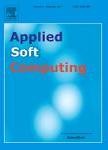版权所有:内蒙古大学图书馆 技术提供:维普资讯• 智图
内蒙古自治区呼和浩特市赛罕区大学西街235号 邮编: 010021

作者机构:Univ Luxembourg Interdisciplinary Ctr Secur Reliabil & Trust Luxembourg Luxembourg Univ Luxembourg Fac Sci Technol & Commun Luxembourg Luxembourg Univ Lille 1 Lab Informat Fondamentale Lille F-59655 Villeneuve Dascq France
出 版 物:《APPLIED SOFT COMPUTING》 (应用软计算)
年 卷 期:2014年第24卷第0期
页 面:432-446页
核心收录:
学科分类:08[工学] 0812[工学-计算机科学与技术(可授工学、理学学位)]
基 金:Green@Cloud [INTER/CNRS/11/03] National Research Fund, Luxembourg Marie Curie Actions of the European Commission (FP7-COFUND), under AFR National Research Fund of Luxembourg (FNR) Tri-ICT AFR
主 题:Evolutionary algorithms Multi-objective optimization Scheduling Energy efficiency Dynamic voltage scaling
摘 要:The ongoing increase of energy consumption by IT infrastructures forces data center managers to find innovative ways to improve energy efficiency. The latter is also a focal point for different branches of computer science due to its financial, ecological, political, and technical consequences. One of the answers is given by scheduling combined with dynamic voltage scaling technique to optimize the energy consumption. The way of reasoning is based on the link between current semiconductor technologies and energy state management of processors, where sacrificing the performance can save energy. This paper is devoted to investigate and solve the multi-objective precedence constrained application scheduling problem on a distributed computing system, and it has two main aims: the creation of general algorithms to solve the problem and the examination of the problem by means of the thorough analysis of the results returned by the algorithms. The first aim was achieved in two steps: adaptation of state-of-the-art multi-objective evolutionary algorithms by designing new operators and their validation in terms of performance and energy. The second aim was accomplished by performing an extensive number of algorithms executions on a large and diverse benchmark and the further analysis of performance among the proposed algorithms. Finally, the study proves the validity of the proposed method, points out the best-compared multi-objective algorithm schema, and the most important factors for the algorithms performance. (C) 2014 Elsevier B.V. All rights reserved.